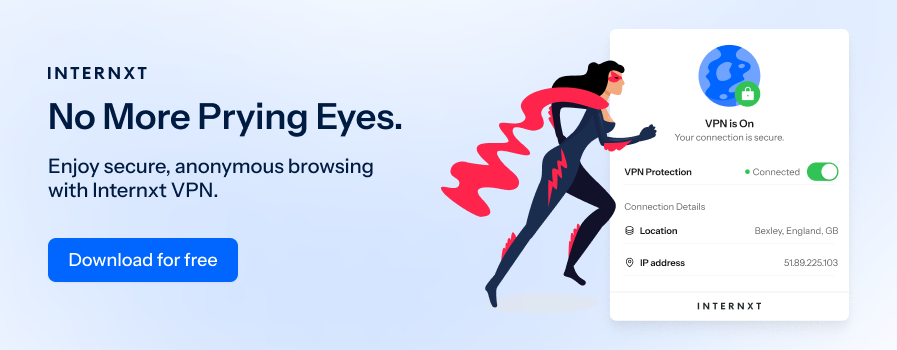Social Media Scams and How to Avoid Them

While social media can be a great place to connect with people, friends, and families, it still has its dangers.
Social media websites such as Facebook, LinkedIn, Twitter, etc, are an attractive platform for scammers to target people to steal their personal and financial information.
As a result, this article will inform you of the most common social media scams, statistics, and offer advice and tools to avoid them and stay safe online.
Table of contents
- Social media scam statistics
- Signs of social media scams
- The most common social media scams
- Tools to help prevent social media scams
Social media scam statistics
Here are some statistics showing the dangers and impact of social media scams.
- Imposter scams are the most common: The Federal Trade Commission (FTC) reported that imposter scams were the most frequently reported type of fraud in 2024.
- 31% of scam victims suffered financial loss.
- Average loss from social media scams: $2,600 per victim.
- 62% of scammers use Facebook.
- 85% of people received a digital scam attempt.
Signs of social media scams
If you notice any of the following tactics, it's likely to be a scam.
- Fake or incomplete profiles with few followers or no profile picture
- Messages promising easy money, prizes, or free items
- In the case of romance scams, they say they live overseas and can’t meet you in person
- Requests for personal information, passwords, or financial details
- Overly emotional or manipulative posts
- Offers that seem too good to be true
- Accounts or websites impersonating real brands with slightly different usernames and URLs
- Unexpected friend requests or messages asking for money or favors
Some social media scams will use a mixture of these tactics, so now we will explore in more detail what the most common scams are to watch out for on social media.
The most common social media scams
Imposter scams
Noted as the most common of all social media scams, imposter scams are schemes where someone pretends to be a trusted person or organization to deceive others.
Like many scams, the scammer will create accounts that closely resemble real ones, often copying names, photos, and details to look authentic.
These fake accounts may target businesses posing as a manager or someone with authority to try to gain access to accounts or other confidential, financial, or sensitive information.
How to prevent:
- Verify requests by contacting the real person or organization through official channels
- Use 2FA on all your accounts in case a password leaks
- Report and block fake accounts so nobody else is targeted

Phishing messages
The majority of social media scams rely on phishing techniques such as malicious links that send you to fake websites or apps designed to steal your passwords or install ransomware or spyware on your device.
They can be sent in many forms, typically by email, but equally via direct messages, WhatsApp, or as a file to download.
How to spot a phishing message:
- Check for unusual sender addresses, spelling mistakes, or generic greetings.
- Be cautious of urgent requests or threats that pressure you to act quickly.
- Hover over links to see the actual URL before clicking to ensure it is legitimate.
Fake e-commerce sites
Platforms like Facebook and Instagram will have profiles linking to fake e-commerce sites of technology, clothes, or even celebrity merchandise. These will use real images and products from the genuine site, but with heavy discounts that don’t match the prices on the real website.
You can spot spoofed websites by checking the URL if you click on the link to see if it matches the URL of the real website. You can also visit the profile page to check if the account is verified by Instagram and check previous posts, as well as the number of followers the account has.
Impersonating family members
Similar to imposter scams, people may also try to impersonate your family members on social media for financial gain. They will often copy a family member's profile and message you, claiming they are in an urgent situation and they need you to send them money right away.
The best way to prevent this scam is to contact the family member directly, report and block the account to avoid further information, and to protect other members of the family they may target.
Get-rich schemes
Get-rich schemes on social media are scams that promise quick and easy money in exchange for an upfront payment, normally by cryptocurrency due to its anonymity.
The goal of this scam is to take your money or personal information in exchange for an offer that sounds too good to be true. They normally offer investment opportunities, giveaways of luxury products, or insider trading tips they claim “cannot fail”.
How to prevent:
- Be skeptical of offers that promise quick money or guaranteed returns.
- Never share personal or financial information with unknown accounts.
- Research the person or opportunity outside of social media before engaging.
Dating scams
Online dating scams take advantage of people looking for love online and come in many forms. The most popular dating scams are catfishing and fake profiles. These generally involve someone creating a fake profile using someone else's image.

Once the scammer matches with someone, they start the conversation and try to build initial trust with their target. Once a connection is made, they will ask for money, gifts, or if they claim they live far away, travel expenses.
Romance scams are becoming more popular due to the development of Artificial Intelligence, allowing scammers to create lifelike fake profile pictures. AI can even be used in video calls and to create fake voices, making this kind of scam particularly hard to identify.
To prevent dating scams:
- Verify identities by doing reverse image searches to confirm photos.
- Avoid sending money or sharing personal information with someone you have not met in person.
- Be cautious of people who move too quickly in expressing love or avoid meeting face-to-face.
Fake LinkedIn job offers
LinkedIn job scams are fraudulent offers where scammers pose as recruiters or companies to trick job seekers. They create fake job postings or send direct messages claiming to offer high-paying or remote positions that require very few hours but return a high salary.
Once interest is shown, the fake recruiter will ask for your CV, which always contains your personal information, such as email, address, and phone number, which scammers can use for identity theft or fraud.
They may also ask for upfront payments to cover training or equipment expenses.
How to prevent:
- Verify job postings by checking the company’s official website and LinkedIn page by sending a message to the HR team or head of department.
- Never pay for training, equipment, or job applications; genuine jobs cover these costs themselves.
- Avoid sharing personal information with recruiters you cannot confirm as legitimate.
Tools to help prevent social media scams
While preventing social media scams relies on learning to identify phishing links and fake profiles, there are some tools you can implement to help prevent scams with the added benefit of increasing your online privacy.
- Password generators and managers are the best tools to create strong passwords or passphrases to prevent dictionary attacks or brute force attacks on your accounts
- 2FA tools, such as Authy, are applications that require additional verification on top of your password and offer increased security against password leaks
- Encrypted emails can help detect and prevent spam messages that may include phishing links

Another crucial tool is cloud storage. Services like Internxt can help you prevent the damage of social media scams through encrypted backups to restore your device in the case of ransomware.
Internxt Drive also includes an Antivirus and VPN for further protection against cyberattacks, and its post-quantum encrypted cloud storage ensures you can store your files in total privacy.
To protect yourself against future social media scams, remember the age-old advice of if it sounds too good to be true, it probably is.

